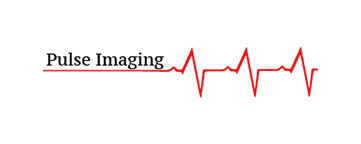X-Ray Thoracic Spine Min 4V
X-raying Basics
A thoracic spine minimum four views X-ray is an imaging exam that examines the middle of your spine. The thoracic spine is the midsection of the spine, between the cervical and lumbar vertebral spines.
It consists of twelve vertebrae, which are separated by intervertebral discs. It forms the thoracic cage, and its bony structure protects the heart, lungs, and esophagus. X-rays of the thoracic spine are typically done to look for fractures and spinal injuries.
Why do you need a Thoracic Spine X ray?
Thoracic spine four view X-rays are most commonly used to examine major or minor trauma. Fractures in the upper sections of the thoracic spine happen less often than those of the cervical and thoracolumbar spines. However, with thoracic spine fractures, there is a higher incidence of spinal cord injury.
Doctors use X-rays of the thoracic spine to detect bone injuries and diseases, fractures, dislocations, tumors, spurs, deformities of the vertebrae, disk narrowing, cartilage loss, osteoporosis, and multiple sclerosis.
When do you need to get it?
Your doctor may order a thoracic spine X-ray to help detect the reasons for your back pain, disease, infection, or other condition. They may order it if you have the following symptoms:
● loss of movement
● loss or alteration in sensation in the lower limbs
● loss of bowel control
● exaggerated reflex activities
● pain due to damaged nerve fibers in your spinal cord
● difficulty breathing or coughing
A thoracic spine X-ray is one of many tests and procedures your doctor may use to help detect the cause of your back pain. They may also order an MRI, ultrasound, a bone scan, or a CT scan.
Do you need to prepare for the X-ray?
This procedure doesn't require special preparation. The technician may ask you to remove your clothes and don a hospital gown because buttons, zippers, and clasps might interfere with the X ray imaging. You must also remove eyeglasses, hearing aids, jewelry, and other metal objects. If you have a suspected neck injury, the technician will place a collar or brace around the neck, preventing further injury to the neck.
Radiation is far more harmful to developing babies, so if you are pregnant, be sure to tell your doctor and the X-ray technician.
What can you expect from this X-ray?
Generally, an X-ray procedure of the thoracic spine consists of 4 views.
1.AP view: This is a basic view of the thoracic spine that shows all twelve thoracic vertebral bodies, disc spaces, and joints. This projection helps to see compression fractures, subluxation, or kyphosis. For this view, the X-ray technician will place you in a standing position with your arms by your side and head resting on a thin support.
2.Lateral view: This view images the thoracic spine from the side view. This view is used in trauma cases to see compression fractures, subluxation, or kyphosis. It is used along with the AP view for a complete thoracic spine series. For this view, the technician will position you either standing or prone, depending on whether you have a spinal injury. The technician will ask you to flex your elbows so that your forearms are by your thorax.
3.AP or PA Oblique View: This is an angled view of your thoracic spine, usually taken to see the zygapophyseal articulations and all twelve of the vertebrae. For this view, you will be asked to sit or stand in a lateral position and then rotate about 20 degrees on the affected side, with your shoulder resting against the detector.
4.AP or PA Oblique Recumbent View: This is a type of angled view of the thoracic spine. It is taken in the lateral recumbent projection. For this, you will be positioned lying down with your head elevated, and knees and hip flexed. The X-ray technician will explain how to position yourself depending on whether your doctor has ordered the PA Oblique Recumbent view or AP view.
What do your X-ray results mean?
In case of an emergency, the results of a thoracic spine X-ray can be available immediately. Otherwise, the technician will give your results to a radiologist. They will interpret the X-rays and send a report to your primary physician. Then, he/she will discuss it with you and explain their findings. The doctor may accordingly prescribe further tests and decide on a treatment plan.
Related X-rays: Thoracic Spine AP Lateral, Thoracic Spine lateral, and swimmer view
Frequently ordered together
X-Ray Thoracic Spine AP & Lateral
X-Ray Thoracic Spine AP Lateral Swimmer View
MRI Thoracic Spine with Contrast
MRI Thoracic Spine without Contrast
CT Thoracic Spine without Contrast
MRI Thoracic Spine with & without Contrast
CT Thoracic Spine With And Without Contrast
X-Ray Thoracic Spine Min 4V
X-Ray Thoracic Spine 2V
X-Ray Thoracic Spine 3V
150.00$
150.00$
375.00$
515.00$
565.00$
620.00$
620.00$
150.00$
65.00$
150.00$















